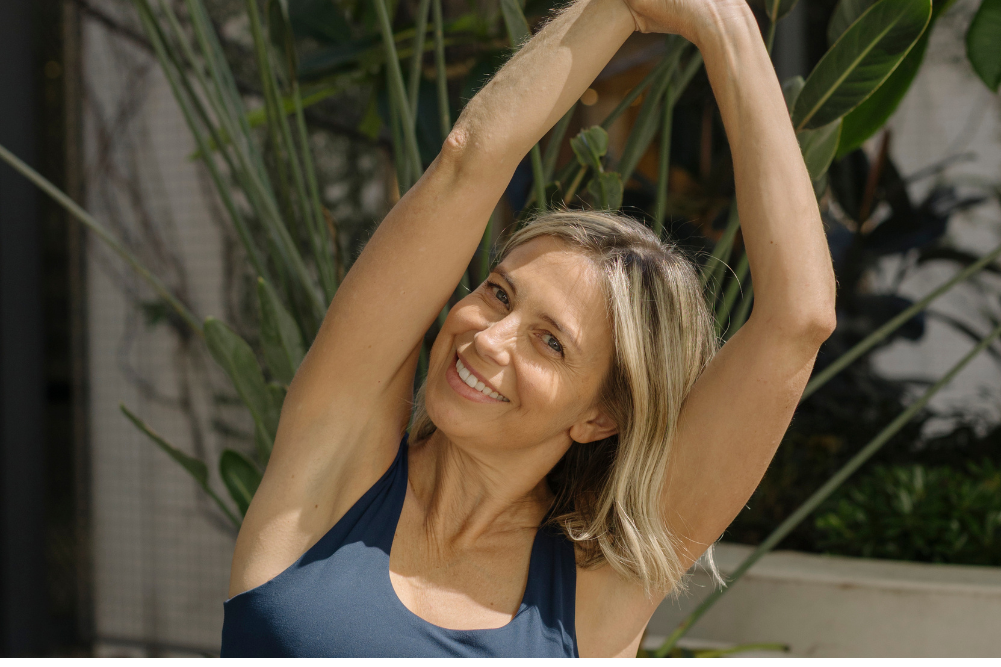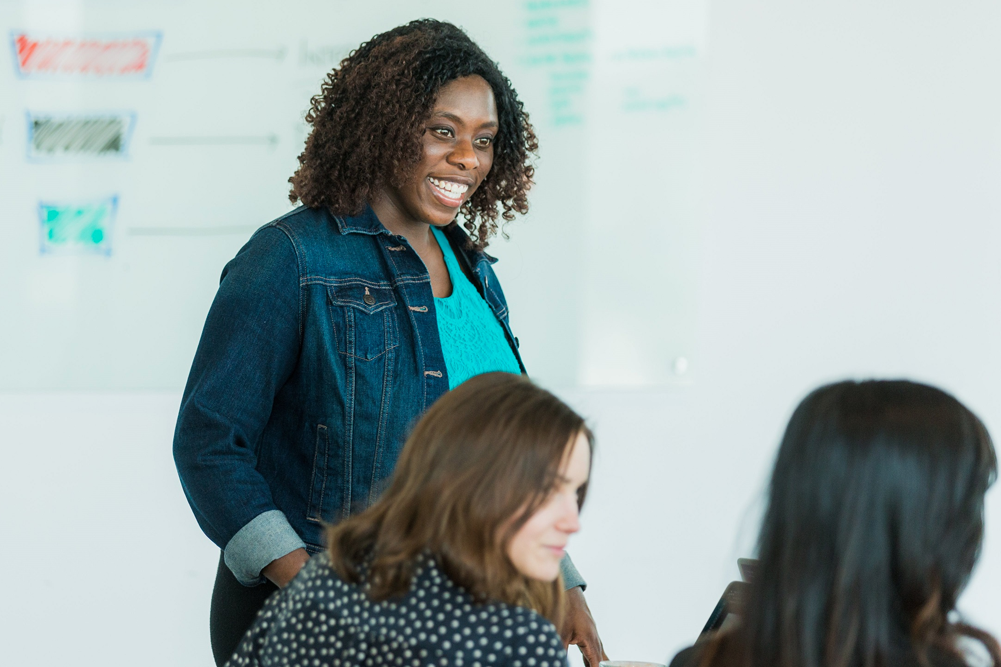Discover how yoga can improve your memory
Have you ever read something — perhaps a page of a book, a recipe or even, dare I say, an article in this magazine — and not remembered what you just read? What about recalling the memory of what you ate for breakfast yesterday or what you did last weekend?
In our overworked, overstimulated and technology-reliant culture, many of us, regardless of age, don’t use our brains as we once did and find it increasingly difficult to retain information, recall short-term memories and concentrate on what’s in front of us.
We may claim this is simply due to a “bad memory”, but a lot of the time it’s also because we simply are not present in our day-to-day lives, and the finer details can easily slip by.
Yoga is a tool that can strengthen the body’s biggest and most powerful muscle: the mind.
This is not to discount the fact that, as we age, we face cognitive decline, which affects memory. Indeed, the greatest fear for many of us is suddenly not being able to think of the words that used to so easily spring to mind, or too frequently getting into a flurry over not being able to find our car keys or mobile phone.
Yoga, with its infinite benefits, can play a role in keeping the brain stimulated and improve its ability to concentrate, focus and sharpen the memory at any age so we can operate at our best.
This isn’t to say that yoga will give you a photographic memory or stop memory decline altogether. Rather, this practice is a tool that can strengthen the body’s biggest and most powerful muscle: the mind. By quietening the monkey mind that aimlessly jumps from thought to thought, yoga can help you become present and strengthen your thinking skills. This, in turn, allows you to truly focus on a given task, whether it’s retaining information or simply relishing a moment.
The link between yoga & the brain
A wide array of research over the years has noted the link between physical activity and reduced cognitive decline and improved brain health.
Studies on exercise in general have noted its role in improving bloodflow to the brain and stimulating the growth of new vessels and cells. Exercise has also been found to release GABA, a neurotransmitter that helps relax the brain. It also reduces insulin resistance and inflammation, and stimulates the growth of new connections between cells in important cortical areas of the brain.
Many of these benefits overlap with those of yoga poses, or asanas, especially with it comes to improving the circulation of blood and lymph. Inversions, in particular, such as shoulder stands and headstands, increase bloodflow to the head and allow the brain to be flushed with oxygenated, nutrient-rich blood. These poses are also known for their ability to improve memory.
Researchers over the years have started paying more attention to yoga’s benefits, including its ability to improve brainpower more than other exercise and activities.
Named after the goddess Hakini who rules the ajna, or third eye chakra … this mudra strengthens our thinking skills and concentration, and bridges the left and right hemispheres of the brain.
A 2016 study by the University of California, Los Angeles, compared results from yoga and meditation with those from memory-training exercises such as crosswords, puzzles and brain training. Study participants were split into two groups: one completed a three-month course in yoga and meditation, while the other practised memory-training exercises.
At the end of the three months, brain scans and cognitive testing revealed both groups performed markedly better compared to their results at the beginning of the study. Both groups saw similar improvements in verbal memory — that is, memory used to remember names or lists of words. Those who practised yoga, however, saw some additional benefits. Along with improved visual-spatial memory, used for balance, depth perception, recognising objects and navigation, they also experienced improved moods and enhanced communication between parts of the brain that relate to the ability to focus and multitask.
Add to this various other studies that note the role of cyclic meditation, savasana, breathing practices and an all-round consistent yoga practice in improving memory performance, cognition and emotional health, and you have a pretty convincing case!
How to strengthen the mind
This research reinforces what the great yogis have been saying for many years. In the Yoga Sutras, the sage Patanjali outlines eight limbs of yoga. Asana, relating to yoga’s physical postures, is the third and best-known limb. While asanas, as well as breathing exercises, relax the body and mind and help prepare for meditation, it’s the fifth to seventh limbs of yoga that are particularly important when it comes to actively creating the ideal conditions for the mind to flourish.
The fifth limb, pratyahara — sense withdrawal — is the practice of bringing one’s focus away from the distractions of the external environment and senses and turning it within. This allows for the sixth limb, dharana to come into play.
With a translation of “to hold”, dharana refers to maintaining your concentration or focus of attention in a single direction instead of many. The vrittis, fluctuations of the mind, cause us to jump from one thing to another, distracting us and hindering our attempts to focus. The practice of dharana is key in strengthening the mind.
Once you have a steady, continuous flow of attention directed towards a single point, this can evolve into dhyana or meditation — the seventh limb. As you can see, this entire process is about conditioning and putting your thinking and concentration skills to the test.
The shoulder stand is an invigorating inversion that increases blood to the brain, promoting vitality and improved memory.
The purpose of yoga is to find union or harmony in the body, mind and breath. All the limbs work towards this goal by reducing stress and anxiety and initiating a relaxation response so you can truly concentrate, focus and achieve the end goal of connection with all the layers of your being — a state also known as the eighth limb, samadhi. It’s only through stimulating and conditioning the mind that you can get here.
As you can see from the scientific studies, and the teachings of yogis, the mind and brain are a muscle that can be strengthened. It’s possible to improve things like concentration, focus and memory; they don’t have to inevitably decline as we age.
Increasingly, we’re seeing cases of teenagers and young adults who struggle with concentration due to overstimulation and “digital dementia”, but this just reinforces that the mind needs to be exercised properly and regularly — at all ages — to truly maximise its full potential. And, remember, practice makes perfect!
Cleansing the mind
There’s so much more to yoga than physical postures. Yoga’s cleansing techniques such as kapalbhati and trataka also help to improve brainpower and memory by increasing blood circulation to the brain and aiding concentration.
Kapalbhati
Kapalbhati translates to frontal lobe purification and is a type of breathing exercise that awakens and stimulates the brain and clears the sinuses. Kapalbhati involves a series of rapid, forceful exhalations and passive inhalations. To practise, imagine you have a piece of string attached to the back of your naval that is being tugged every second. Take a breath in and, as you activate the abdomen, forcefully exhale as if you were blowing your nose. A natural inhalation follows. This is repeated continually for roughly 1 minute.
Trataka
Also known as “blinkless gazing”, trataka is a cleansing practice said to improve concentration and memory. It involves sitting in a darkened room with a burning candle. The eyes are kept open and fixed on the candle flame for as long as possible, without blinking, until the eyes start to water. This serves to clean and cool the eyes and improve their function. Most recommend you practise “blinkless gazing” for 5–10 minutes — your eyes will really be watering at this point. Then, slowly close the eyes, clear the thoughts and visualise the impression of the candle in your mind.
Mudras for memory
Mudras are gestures often made with the hands during meditation to aid in the flow of prana — the life force that sustains all — throughout the body. Mudras in general are beneficial for providing a point of focus for the mind during practice, but the hakini mudra is one in particular to practise.
Named after the goddess Hakini who rules the ajna, or third eye chakra located at the eyebrow centre and Home to our imagination and intuition, this mudra strengthens our thinking skills and concentration, and bridges the left and right hemispheres of the brain. To practise, lightly join the tips of the five fingers on your right hand with those of the left while keeping the palms apart, and bring your focus to your third eye.
A sequence for memory
The following poses are known for their ability to increase bloodflow to the brain and stimulate chakras that govern different areas of the brain; they require balance and poise to reach the final position.
Make note of where to centre your drishti (gaze) in each pose to further help develop single-pointed concentration. Couple these postures with a pranayama breathing exercise such as alternate nostril breath for a well-rounded practice.
Sarvangasana (shoulder stand)
The shoulder stand is an invigorating inversion that increases blood to the brain, promoting vitality and improved memory. Begin by lying on your back with arms beside you. Bend the knees and bring them above your chest. Press the arms against the ground and start to lift the hips upward. Use your hands to support the hips and slowly straighten the legs upward. Adjust and move the hands further up to support the mid-back and allow the chin to come close to the chest. Your drishti should be straight up at your toes.
Matsyasana (fish pose)
Matsyasana is a restorative position ideally practised after a shoulder stand. However, on its own it’s also beneficial for improving circulation to the thyroid, lungs and heart. Begin by lying flat on your back. Lift the chest up, walk the shoulder blades in and try to bring the crown of the head onto the mat. This stimulates the sahasrara chakra, located on the top of the head, which governs the brain. Bring your awareness to the sahasrara and gaze up to the sky.
Navasana (boat pose)
Sit on the mat with your knees bent in front of you and toes pointing up. Grip your big toes or ankles with each hand and lift one leg up at a time to get your balance. Once you’re balanced, lift both legs up. Hold the position and try to bring the head as close to the knees as possible while keeping the back, legs and arms straight. Your body should resemble a letter “V”. Maintaining balance in this pose requires the mind to focus and hold at a single point. Focus your gaze on your toes.
Janu sirsasana (head to knee pose)
Sit with the legs extended in front of you. Bend the right knee and bring the heel to the perineum. Square the hips and inhale, lifting the arms up. Keep the length in the arms as you slowly inhale, bringing both hands to the left foot. Lengthen and soften the spine, trying to bring the head as close to the knee as possible. Janu sirsasana stimulates the ajna chakra and frontal lobe, relaxing the mind and brain. If you can bring your forehead to your knee, allow your gaze to come toward the nose; otherwise, look at the toes.
Garudasana (eagle pose)
This pose is about balancing opposing sides to find harmony in the body. Standing upright, cross the left hand underneath the right. Bend the elbows, wrap the arms around each other and bring the palms together. Bend the knees and bring the left leg over the right. Lift the elbows so they are at shoulder height and bring your awareness to the ajna chakra. This pose requires a lot of balance, so select an unmoving point for your drishti.
Padmasana (lotus pose)
Sit on the mat and cross the legs, bringing the opposite foot on top of the opposite thigh. If you can’t bring both feet on the thighs at the same time, just do one side at a time. Bring the hands in the hakini mudra, close the eyes and focus on the breath.








